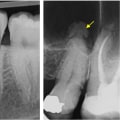Breast cancer is a leading cause of death among women globally, and early detection is key to improving survival rates. Mammography has long been considered the gold standard for detecting breast cancer in its early stages. However, mammography has limitations that can lead to false positives or negatives, resulting in delayed diagnosis and treatment.
This is where medical imaging comes into play. Medical imaging, such as ultrasound, magnetic resonance imaging (MRI), and positron emission tomography (PET), can provide additional information about breast tissue that may not be visible on a mammogram. Medical imaging can also confirm suspicious findings on a mammogram or detect abnormalities that were missed during the initial screening.
The Importance Of Early Detection For Breast Cancer
Early detection of breast cancer is crucial for improving patient outcomes, and medical imaging plays a vital role in facilitating accurate diagnoses.
Preventive measures such as regular mammograms can help detect breast cancer early when it is most treatable. It is essential to understand the risk factors associated with breast cancer so that appropriate screening guidelines can be followed to ensure timely diagnosis.
Breast cancer is the second leading cause of death among women worldwide, and detecting it at an early stage can significantly increase survival rates. Mammography remains the gold standard for breast cancer screening, allowing radiologists to identify small lesions that may not be palpable during physical exams.
By detecting these abnormalities earlier, patients have more treatment options available and generally experience better outcomes.
Several risk factors are associated with an increased likelihood of developing breast cancer, including age, genetic mutations (such as BRCA1 or BRCA2), family history of breast cancer, and exposure to estrogen over a prolonged period. Following recommended mammogram screening guidelines based on individual risk factors allows physicians to diagnose and treat breast cancer earlier in its course.
Medical imaging technology has improved significantly over time, providing greater accuracy in diagnoses while reducing radiation exposure for patients undergoing testing. As such, early detection through regular mammograms remains one of the most effective methods for preventing deaths from breast cancer.
Limitations of Mammography
Like a flashlight that can only illuminate one small area at a time, mammography has its limitations in detecting abnormalities in breast tissue. While it is still considered the gold standard for breast cancer screening, studies have shown that mammograms are not perfect and can yield false positives or miss some cancers altogether.
False positives occur when mammograms indicate the presence of cancer where there is none, leading to unnecessary biopsies and anxiety for patients. On the other hand, false negatives occur when mammograms miss cancers that are present.
Another limitation of mammography is its potential for overdiagnosis. Overdiagnosis occurs when screening detects cancer that may never have caused harm or required treatment during a patient's lifetime. This leads to overtreatment and unnecessary costs and side effects associated with intervention such as surgery, radiation therapy, and chemotherapy.
To address these issues, alternative methods such as digital breast tomosynthesis (DBT), also known as 3D mammography, have been developed to improve accuracy in detecting breast abnormalities while reducing false positive rates.
While mammography remains an essential tool for detecting breast cancer early on and improving survival rates among women diagnosed with the disease, it does come with its own set of limitations, such as false positives and overdiagnosis risks. Alternative methods like DBT show promise in addressing these limitations by providing better visualization of breast tissue while minimizing potential harms associated with traditional screening methods. It is important for healthcare providers to consider these factors when recommending screening options for their patients. If you are looking for a facility that offers a full range of mammogram services, you can search for "mammogram NYC".
The Role of Medical Imaging in Breast Cancer Detection
The detection of breast cancer heavily relies on the use of various imaging techniques that allow for a comprehensive evaluation of breast tissue. Radiology advancements have played a crucial role in improving the accuracy and reliability of mammogram results.
Digital mammography techniques, such as tomosynthesis or 3D mammography, have been shown to reduce false-positive results while increasing the sensitivity of detecting small tumors that may not be visible on traditional 2D images. Imaging technology has also enabled physicians to detect abnormalities at earlier stages, which can significantly increase patients' chances of successful treatment and recovery.
Medical imaging modalities like ultrasound, magnetic resonance imaging (MRI), and positron emission tomography (PET) scans provide additional information about breast tissue's composition, blood flow patterns, and metabolic activity. By combining multiple imaging methods, radiologists can obtain a more accurate diagnosis and tailor personalized treatment plans based on each patient's unique needs.
Medical imaging is an essential tool for accurate mammogram results in New York, NY. Radiology advancements have improved the sensitivity and specificity of digital mammography techniques while enabling physicians to detect abnormalities at earlier stages. With access to various imaging modalities that provide complementary information about breast tissue characteristics, radiologists can achieve greater diagnostic accuracy and improve patient outcomes.
Benefits of Medical Imaging for Accurate Diagnosis and Treatment Planning
Utilizing multiple imaging modalities enhances diagnostic precision and personalized treatment planning for breast cancer patients. Radiology advancements have revolutionized the medical field by providing more accurate and detailed images of breast tissue. These advancements have led to the early detection of breast cancer, which is crucial in improving survival rates.
Medical imaging is a non-invasive way of screening for breast cancer that has become increasingly popular due to its ability to detect abnormalities that cannot be seen during physical exams.
Another benefit of medical imaging is patient comfort. Unlike invasive procedures such as biopsies, mammograms and ultrasounds are painless and require minimal downtime. Patients can resume their daily activities immediately after the procedure with no side effects or discomfort. This makes it easier for them to undergo regular screenings without fear or anxiety about potential pain or discomfort.
Medical imaging is also cost-effective compared to other diagnostic methods, such as biopsies. The use of these modalities helps reduce the need for unnecessary surgeries, resulting in reduced healthcare costs for both patients and healthcare providers. Additionally, it allows physicians to develop personalized treatment plans based on an individual's unique needs, further reducing costs associated with ineffective treatments.
Utilizing multiple imaging modalities enhances diagnostic precision and personalized treatment planning for breast cancer patients in New York City. Radiology advancements have improved early detection rates while minimizing discomfort and reducing healthcare costs associated with unnecessary surgeries or treatments. As technology continues to advance, medical imaging will continue to play a critical role in detecting breast cancer accurately while ensuring optimal patient outcomes at an affordable cost.
Contact The Best Mammogram Service Facility In New York, NY
Early detection is crucial in the fight against breast cancer. While mammography remains the gold standard in screening for breast cancer, it has its limitations. Medical imaging plays a vital role in detecting potential abnormalities and providing accurate diagnosis and treatment planning. By combining mammography with other medical imaging techniques, such as ultrasound and MRI, healthcare professionals can improve their ability to detect and diagnose breast cancer at an earlier stage.
Maiden Lane Medical Downtown is a reliable medical facility that provides mammogram services to women in New York, NY. The facility is equipped with state-of-the-art technology and staffed with trained professionals who are committed to providing top-notch care to their patients. They offer a full range of mammogram services, including digital mammography, 3D mammography, and breast ultrasound. Maiden Lane Medical Downtown also accepts most insurance plans, making it accessible to women of all backgrounds.
Overall, this facility is an excellent choice for women who are looking for a safe and comfortable place to get their mammograms done.






